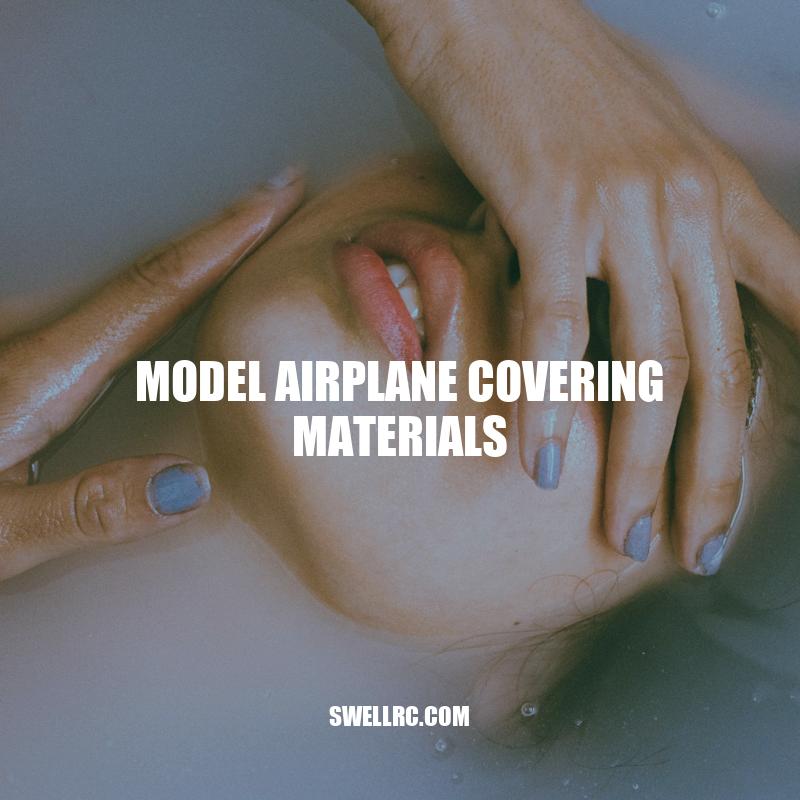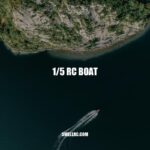Choosing the Right Model Airplane Covering Materials
Building model airplanes is a fascinating hobby that allows enthusiasts to express their creativity and craftsmanship. Model airplanes come in many shapes, sizes, and complexities, from simple free-flight models to complex radio-controlled planes that mimic real aircraft. One crucial aspect of building a model airplane is selecting the right covering material. The covering material is the outer layer that provides both the aesthetic appeal and protection to the underlying structure of the plane. It can affect the weight, durability, and flying characteristics of the model. With so many options available in the market, choosing the right covering material can be a daunting task. In this article, we will explore the different covering materials available for model airplane builders, their properties, advantages, and disadvantages. Whether you are a seasoned pro or a beginner, this guide will help you make an informed decision when it comes to selecting the best covering material for your model airplane.
Tissue paper and silkspan are traditional materials for covering model airplanes. Here are some points to consider when using these materials:
- Tissue paper is lightweight, inexpensive, and easy to apply.
- Silkspan has a finer texture and is more durable than tissue paper, making it suitable for airplanes that require a smoother, more polished appearance.
- Both materials are available in a wide range of colors and designs, allowing builders to create unique finishes on their models.
- Tissue paper and silkspan require a coat of clear or colored dope to protect the materials from fuel, moisture, and damage.
- These materials are not suitable for outdoor flying as they are fragile and can tear easily.
- Tissue paper and silkspan are ideal for vintage or classic model airplanes that require a nostalgic or authentic look.
Although tissue paper and silkspan are not as popular as they once were, they are still used by some builders who prefer the traditional look and feel of these materials. You can find tissue paper and silkspan from online retailers or local hobby shops that cater to model airplane enthusiasts. Some websites offer tutorials and guides on how to apply and prepare these materials for covering your model aircraft.
‘Where can I find tutorials on how to apply and prepare tissue paper and silkspan for covering model airplanes’?
If you’re looking for tutorials on how to apply and prepare tissue paper and silkspan for covering model airplanes, you’ve come to the right place! The good news is that there are plenty of resources available online to help you get started on this fun and rewarding hobby.
One great place to look for tutorials is on YouTube. There are many model airplane enthusiasts out there who have created helpful videos that demonstrate how to apply and prepare tissue paper and silkspan for covering model airplanes. Simply search for “model airplane covering tutorial” or a similar phrase, and you’re bound to find plenty of options to choose from.
Another great resource for tutorials on this topic is online forums and communities. There are many online communities dedicated to model airplane building and flying, and these communities often have sections devoted specifically to covering techniques. Here, you can find step-by-step guides and helpful tips from experienced model airplane enthusiasts who are happy to share their knowledge with others.
In addition, there are also many books and magazines available that offer in-depth tutorials and guides to covering model airplanes. These resources can be especially helpful for those who prefer a more structured, traditional approach to learning about this hobby.
No matter which resources you choose to use, the key is to practice and experiment until you find the techniques and materials that work best for you. With time and dedication, you’ll be able to cover your model airplanes with confidence and skill. So go ahead and get started today!
Model Airplane Covering Materials
Monokote is a popular heat-shrinkable plastic film that model airplane builders love to use. Here are some features of this material:
- Monokote is available in a wide range of colors and designs, including metallic and pearlescent finishes.
- This material can be thermoformed to conform to complex shapes, making it easy to cover different parts of your model airplane.
- Monokote is lightweight, durable, and resistant to punctures, tears, and fuel, making it suitable for outdoor flying and racing.
- Monokote is easy to apply. You can use a sealing iron or heat gun to shrink the film onto the surface of your aircraft.
- Monokote provides a smooth, shiny finish that is free from wrinkles and bubbles.
The following table shows the specifications of some popular Monokote products:
| Product Name | Weight | Width | Length |
|---|---|---|---|
| Monokote | 1.25 oz/yd² | 26 in | 6 ft |
| Monokote Metallic | 1.80 oz/yd² | 26 in | 6 ft |
| Monokote Pearl | 1.10 oz/yd² | 26 in | 6 ft |
Interestingly, Monokote was originally developed by the US military during World War II as a heat-shrinkable covering for aircraft. Since then, it has become a go-to material for model airplane builders. You can purchase Monokote from popular online retailers or hobby shops that sell model airplane parts and accessories. Some websites offer tutorials and videos on how to use Monokote and achieve the best results with this material.
Other notable model airplane covering materials include:
Ultracote – Another heat-shrinkable film that is highly regarded in the model airplane community for its ability to provide smooth finishes and vibrant colors. It is also easy to apply and has excellent adhesive properties.
Oracover – This brand is known for its ultralightweight coverings that are tough and tear-resistant. It also has a wide range of colors and designs, including matte and metallic finishes.
Solite – A lightweight and translucent material that creates a “paint-like” finish on model airplanes. It is also wrinkle-free and easy to apply.
To learn more about these materials, check out our comprehensive guide to model airplane covering.
What are some other popular model airplane covering materials besides Monokote?
Monokote is a popular material used for model airplane covering due to its durability, ease of application and wide range of colors. However, there are other model airplane covering materials that are worth considering.
One popular alternative to Monokote is Ultracote, also known as Oracover. It offers similar properties to Monokote, but with a more flexible and forgiving surface. This makes it easier to apply over curves and contours on the airplane’s surface.
Another option is Aerofilm, which is a lightweight and stretchy covering material. Its ultra-thin design provides a smooth and streamlined finish on the model airplane. Many hobbyists also appreciate its low-temperature application process that makes it suitable to use on foam and plastic models.
Heat shrink film is another material used for covering model airplanes. It is transparent and has a glossy finish which is popular for drones and other small models that require a sleek and shiny look. Additionally, heat shrink film adheres well to balsa wood, making it a reliable option for traditional model airplanes.
Non-traditional coverings like tissue paper and silkspan are other options to consider for a more vintage look and feel. While these materials require a little more skill and patience to apply, they can create beautiful finishes on the model airplane’s structure.
It is always essential to choose a covering material that best fits your desired outcome and your level of skill. Researching available options is a crucial step in constructing a successful model airplane.
Model airplane covering materials are essential for any model airplane builder who wants their finished product to look and perform well. Two popular options for covering materials are Monokote and Ultracote.
Monokote is a heat-shrinkable plastic film that is known for its durability and strength. It is available in a variety of colors and designs, making it easy to find the perfect option for your model airplane. Some features of Monokote include:
- Monokote is resistant to fuel, solvents, and abrasion, making it ideal for gas-powered model airplanes.
- Monokote can be applied to almost any surface with the help of a heat gun or iron, and can be easily removed and replaced without damage to the underlying structure.
- Monokote provides a smooth, wrinkle-free finish that looks great and is easy to maintain.
- Monokote is available in different weights and thicknesses to suit different model airplane sizes and applications.
Ultracote is another heat-shrinkable plastic film used in model airplane building. It is known for its wide range of colors and designs, resistance to sunlight, and ease of application. Some features of Ultracote include:
- Ultracote is available in a wider range of colors and designs compared to Monokote, making it easier to find the perfect option for your model airplane.
- Ultracote is resistant to sunlight, fading, and peeling, making it ideal for long-term outdoor use.
- Ultracote is lightweight and easy to apply. It can be shrunk onto the surface of your model airplane using a heat gun or iron.
- Ultracote is easy to remove and replace without damaging the underlying structure of the plane.
- Ultracote provides a smooth, wrinkle-free finish that looks great and is easy to maintain.
If you are looking for a covering material that is easy to work with, has a wide range of options, and provides excellent results, Ultracote may be the perfect choice for your model airplane.
Both Monokote and Ultracote can be purchased from online retailers or hobby shops that cater to model airplane enthusiasts. Some websites and forums offer tutorials and tips on how to use these materials effectively. Model airplane builders can explore these brands and products here and here.
‘What are the advantages of using Monokote or Ultracote for model airplane covering’?
There are several advantages of using Monokote or Ultracote for covering your model airplane.
Firstly, both of these materials are made from polyester, which means they are very strong and durable. This ensures that your model airplane will stay well-covered for a longer period of time.
Secondly, Monokote and Ultracote are both very heat-resistant, which is an important factor when covering a model airplane. This is because the covering material needs to be able to withstand heat generated by the model’s engine without melting or deforming.
Thirdly, Monokote and Ultracote are available in a wide range of colors and patterns, allowing you to personalize your model airplane and make it stand out from the crowd.
Finally, Monokote and Ultracote are both very lightweight, which means they won’t add unnecessary weight to your model airplane. This is important because added weight can affect the model’s performance and flight characteristics.
Overall, if you want a strong, durable, heat-resistant and lightweight covering material for your model airplane, Monokote or Ultracote are both excellent choices.
Conclusion
In conclusion, selecting the appropriate covering material for your model airplane is crucial. Whether you prefer traditional materials like tissue paper and silkspan or modern heat-shrinkable films like Monokote and Ultracote, each material has its own pros and cons. As you choose your material, consider the aesthetic you want, the flying conditions you will face, and the ease with which you can apply and maintain the material. By considering these aspects, you can find the perfect covering material that enables your model airplane to soar spectacularly through the skies.



